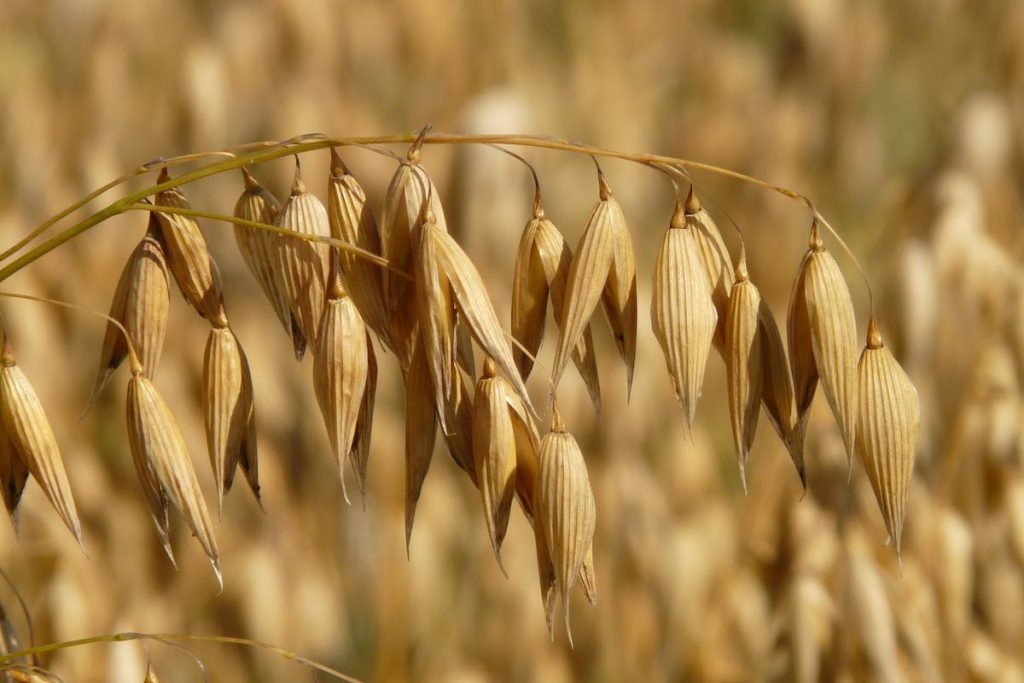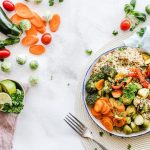Best cereal for your family: Cereal is a popular breakfast food, but it’s usually high in sugar and different unhealthy ingredients. These 14 cereals are each nutritious and delicious.
Cereal is an extraordinarily popular breakfast food.
It’s easy and handy for those that dwell busy life but is usually high in added sugar and different unhealthy ingredients.
Additionally, cereal could be easy to overeat since many cereals lack fiber and protein, that are important for selling fullness (1Trusted Source, 2Trusted Source).
But a number of nutritious cereal choices can be found — each do-it-yourself (DIY) varieties and brands you should purchase on the retailer.
Table of Contents
This article will cover the 14 healthiest cereals you’ll be able to eat.

1. Oats
Oats are a nutritious cereal choice.
They are generally rolled or crushed and then consumed as oatmeal, or porridge.
Since oats are whole grains, they’re rich in fiber and important nutrients. One cup (234 grams [g]) of cooked oats supplies 4 g of fiber, in addition to 59% of the Daily Value for manganese, 23% for selenium, 21% for zinc, and 14% for phosphorus ((*14*)).
They also present good amounts of iron and magnesium ((*14*)).
Additionally, some oats could also be fortified with vitamins and minerals during processing.
You can buy pre-portioned and flavored oatmeal on the retailer, but it’s best to make your personal. Store-bought oatmeal is usually high in added sugars and different unhealthy ingredients.
Oatmeal is extremely versatile and could be ready in some ways. It is usually boiled with water or milk and then topped with fresh fruit, cinnamon, or nuts.
You can also make “overnight” oats, that are soaked in milk or yogurt for a number of hours so they’re able to eat in the morning for breakfast.
2. DIY muesli
Muesli is a healthy and delicious sort of cereal. It’s sometimes made with a mixture of rolled oats, nuts, seeds, and dried fruit.
While just like granola, muesli differs in that it’s consumed raw, with out being baked. Some variations are made with none added sweeteners or oils.
The mixture of whole grains and nuts makes muesli an excellent supply of protein. For instance, Alpen muesli supplies about 6 g of protein in a 2/3-cup (55-g) serving. It also contains fiber, vitamins, and minerals (4Trusted Source).
You can lower the carb content material of muesli considerably by making a grain-free model with coconut flakes, nuts, and raisins.
3. Homemade granola
Homemade granola generally is a very healthy cereal possibility.
It is often made by baking a mixture of rolled oats, nuts, and dried fruit in the oven till it turns into crispy.
Most types of granola contain a good amount of protein and healthy fat. Additionally, it may present a number of vitamins and minerals, such as phosphorus, magnesium, manganese, and B vitamins (5Trusted Source).
Despite its nutrient content material, store-bought granola tends to be high in added sugar, which is why it’s best to make your personal.
Also, keep in thoughts that granola is sort of high in calories. A 1-cup (122-g) serving supplies near 600 calories. For this cause, it’s best eaten in moderation in the event you’re watching your calorie intake. Consider sticking with a serving size of about 1/4 cup (85 g) (5Trusted Source).
4. DIY cinnamon crunch cereal
There are a number of types of tasty “cinnamon crunch” cereals available on the market, but many are high in added sugar. You can keep away from that by making a more healthy model using flaxseed, hemp seeds, cinnamon, coconut oil, and apple juice or a sugar substitute. Find directions here.
One serving of this cereal may present about 5 g of filling protein and is much lower in carbs than many store-bought cereals.
For instance, a 28-g serving of Cinnamon Toast Crunch cereal contains 22 g of carbs. A single serving of this do-it-yourself model made with a sugar substitute contains solely 3 g of carbs, based on the recipe author (6Trusted Source, 7).
5. Post Foods Grape Nuts
Grape Nuts are one other healthy cereal possibility.
According to the producer, Original flavor Grape Nuts are made with solely 4 easy ingredients: whole grain wheat flour, malted barley flour, salt, and dried yeast.
They present 7 g of fiber per 1/2-cup (58-g) serving, together with a range of nutrients, including iron, B vitamins, zinc, magnesium, and copper (8).
You can also make your personal Grape Nuts, using almond and coconut flours instead of wheat flour. Try this recipe.
6. Bob’s Red Mill Paleo-Style Muesli
Bob’s Red Mill Paleo-Style Muesli just isn’t solely healthy but also gluten-free.
In truth, not like traditional muesli, it’s completely grain-free, made instead with coconut, dried fruit, nuts, and seeds.
According to Bob’s Red Mill, a 1/4-cup (24-g) serving supplies 16% of your daily fiber needs and 3 g of filling protein. It also contains a number of important minerals, including iron and calcium (9).
7. Ezekiel 4:9 Sprouted Grain Cereals
Ezekiel 4:9 makes sprouted whole grain cereals, that are fairly nutritious.
Sprouted whole grains have been allowed to sprout, or germinate. This makes them simpler to digest and larger in nutrients than grains that haven’t sprouted (10Trusted Source, 11, 12Trusted Source).
These sprouted cereals are fairly high in fiber and protein and don’t contain any added sugar. The producer experiences {that a} 1/2-cup (57-g) serving contains 23% of your day-by-day fiber wants and 8 g of protein (11).
Moreover, Ezekiel 4:9 sprouted grain cereals present a good amount of potassium, which is important for heart health (11, 13Trusted Source).
8. Nature’s Path Organics Superfood Cereals
Nature’s Path Organics Superfood Cereals are full of healthful ingredients.
These include chia seeds, buckwheat, and hemp seeds, all of that are high in protein and fiber (14Trusted Source, 15Trusted Source, 16Trusted Source).
Additionally, chia seeds are rich in omega-3 fatty acids, which can assist reduce inflammation and promote brain health (14Trusted Source, 17Trusted Source, 18Trusted Source, 19Trusted Source, 20Trusted Source).
9. Barbara’s Shredded Wheat Cereal
Barbara’s Shredded Wheat stands out from different types of cereal in that it has solely a single ingredient: 100% whole wheat.
The wheat is shredded in the shape of biscuits which you can crush up and serve with milk. This product also contains no added sugar — an uncommon high quality amongst store-bought cereals.
According to the model, a 2-biscuit serving of Barbara’s Shredded Wheat supplies 20% of your day by day fiber wants and 5% of your day by day potassium wants (21).
10. Arrowhead Mills Spelt Flakes
Arrowhead Mills Spelt Flakes are one other good cereal possibility.
They are made with only some easy and natural ingredients and don’t contain any added refined sugars.
They present 4 g of protein per serving plus some fiber, vitamin C, phosphorus, B vitamins, and iron, as reported by the producer (22).
11. Cauliflower “oatmeal”
One way to keep cereal healthy is to make it out of cauliflower.
You could make cauliflower “oatmeal” by cooking riced cauliflower with milk or an unsweetened milk different and then including your personal mix-ins. Check out this recipe for inspiration.
This is an wonderful way to reduce your carb intake while still having fun with the delicious taste and textures of oatmeal.
A 1-cup (234-g) serving of cooked oats contains more than 5 times the amount of carbs found in a cup of cooked cauliflower ((*14*), 23Trusted Source).
Additionally, cauliflower is rich in many important nutrients in addition to fiber and antioxidants (23Trusted Source).
12. DIY peanut butter puffs cereal
Homemade peanut butter puffs are a healthy different to store-bought varieties.
They are ready by making a “dough” out of almond flour, peanut butter, cocoa powder, coconut oil, and a number of different ingredients; rolling it into small balls; and baking them in the oven. Try this recipe as an instance.
Substituting these for store-bought peanut butter puffs is a superb way to lower your sugar intake.
Additionally, using almond flour slightly than wheat flour is an efficient way to lower the carb content material of your cereal. One hundred grams of almond flour contains 16 g of carbs, while 1 ounce of wheat flour contains 77 g.
Plus, peanut butter is an effective supply of protein, healthy fat, and a number of vitamins and minerals (24Trusted Source, 25Trusted Source, 26Trusted Source).
It is important to be conscious of your portion size with this cereal as a result of almond flour is sort of high in calories, with 622 calories per 100 g. Consider sticking to a serving size of 1/4–1/2 cup (24Trusted Source).
13. Love Grown Original Power O’s
Love Grown Original Power O’s are easy but full of nutrition.
They contain only some ingredients, including brown rice and garbanzo beans, and haven’t any added sugar. Additionally, they supply a good amount of fiber, with 4 g per 1-cup (35-g) serving, based on the model (27).
What’s extra, a 1-cup (35-g) serving contains 12% of your day-by-day protein wants, in addition to some vitamin C, iron, and calcium (27).
14. DIY flax chia cereal
You can also make your personal healthy cereal out of flax and chia seeds.
All it’s important to do is make a “dough” with flax meal, chia seeds, coconut oil, and cinnamon. You can add a sweetener, such as stevia, if desired.
You can then minimize the “dough” into squares and bake them.
Flax and chia seeds contain omega-3 fatty acids, in addition to protein to keep you full and glad. Additionally, they’re rich in sure nutrients, including magnesium and manganese (14Trusted Source, 16Trusted Source).
The bottom line (Best cereal for your family)
Many people take pleasure in eating cereal for breakfast.
However, cereals are sometimes made with refined grains and added sugars, which you will want to limit or keep away from.
There are loads of nutritious cereal choices available on the market that contain heaps of fiber and protein without the added sugar.
The secret’s to double-check the ingredient listing earlier than shopping for cereal to make sure that it’s a healthy possibility.
You can also make your personal cereal, which is a superb way to increase the nutrient content material and keep away from less-healthy ingredients.
- Read more: Can I lose 10 pounds in one month?
- Read more: Is it bad to want to lose weight fast?
- Read more: 9 health benefits of vegetables legumes and beans
- Read more: 6 Best candy for weight loss – Science based
Pros:
- Fiber Fun: The best cereals are like fiber wizards—packed with fiber, they keep tummies happy and make sure everyone’s on their A-game. It’s like giving your digestive system a pep talk!
- Nutrient Jackpot: They’re the treasure chests of vitamins and minerals—like having a secret stash of nutrients in a colorful box. It’s the breakfast that keeps on giving!
- Morning Fuel: These cereals are the breakfast champions—loaded with energy like a superhero’s power-up, they keep the family charged for the day ahead.
- Variety Show: They offer a breakfast concert with various flavors—like having a cereal orchestra in your pantry. A different taste every morning keeps things interesting!
- Family Bonding: Sharing cereal moments is like a morning hug—it brings everyone together for a cozy, crunchy breakfast experience. Bonding over breakfast? Priceless!
Cons:
- Sugar Avalanche: Some cereals are like sugar-loaded rollercoasters—tasty but with a wild sugar rush that can leave everyone bouncing off the walls.
- Nutrition Confusion: Reading labels feels like deciphering secret codes—sometimes, knowing what’s really healthy can be as tricky as solving a puzzle.
- Price Point: The best cereals can sometimes feel like luxury breakfasts—hitting your wallet a bit harder than expected.
- Sneaky Portions: Bowl sizes can be misleading; it’s like cereals playing hide-and-seek—what seems like a small portion might just be the tip of the iceberg.
- Allergy Alert: Some cereals might contain ingredients that can be like a surprise guest—unwelcomed for those with allergies or dietary restrictions.
Which cereal is best for children?

For kids, the best cereal is like finding a unicorn—magical and exciting! Look for options low in sugar, as those are the stealthy sugar ninjas sneaking into breakfast. Whole grain cereals are like the superheroes—packed with nutrients for those little champs. Check for ones with vitamins like they’re the secret code for superpowers. It’s like picking a favorite crayon color—variety matters! Choose cereals that make breakfast a colorful adventure. Oh, and let’s not forget the taste test; it’s like being a cereal detective—finding the one that makes them do the breakfast happy dance!
What is the top 1 cereal?

The top cereal is like the VIP guest at the breakfast party—Frosted Flakes! It’s Tony the Tiger roaring with flavor, making breakfast a wild adventure. Sweetness galore without going overboard, it’s the cool kid in the cereal aisle. It’s like having a bowl of joy every morning, turning breakfast into a mini celebration. Plus, that tiger on the box? Totally iconic, like the superhero of the cereal kingdom. Sure, it might not have the same superpowers as spinach for muscles, but it’s definitely the captain of the tasty ship!
Which cereals do you usually eat everyday?

My breakfast cereal lineup is like a cast of characters in a morning sitcom! Oats are reliable pals, hearty and comforting like a warm hug. Cornflakes join the party, simple yet classic, they’re like the friend who’s always there. And let’s not forget about granola; it’s the crunchy rebel with nuts and dried fruits—a wild card in the morning routine! Occasionally, Fruit Loops pop in; they’re like the colorful party crashers, adding a burst of fun. It’s a rotating show in the cereal bowl, keeping mornings as exciting as a cereal soap opera!
